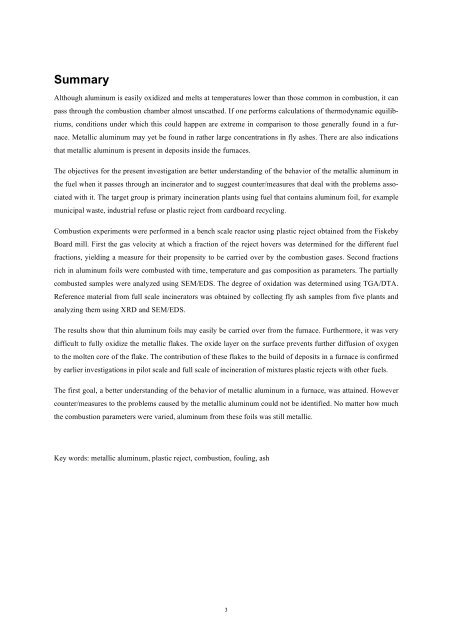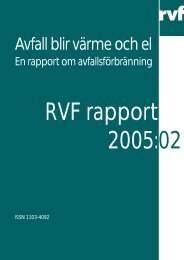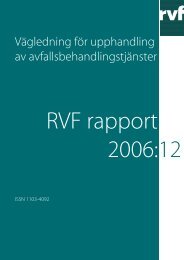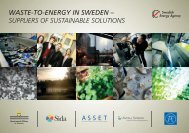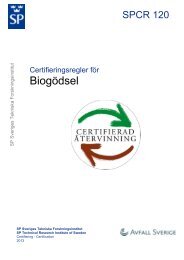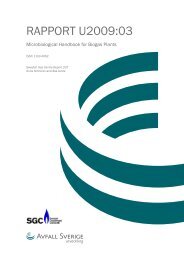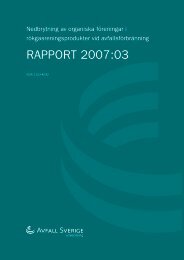2007:11 Metalliskt aluminium. Vätgasbildning och ... - Avfall Sverige
2007:11 Metalliskt aluminium. Vätgasbildning och ... - Avfall Sverige
2007:11 Metalliskt aluminium. Vätgasbildning och ... - Avfall Sverige
Create successful ePaper yourself
Turn your PDF publications into a flip-book with our unique Google optimized e-Paper software.
SummaryAlthough aluminum is easily oxidized and melts at temperatures lower than those common in combustion, it canpass through the combustion chamber almost unscathed. If one performs calculations of thermodynamic equilibriums,conditions under which this could happen are extreme in comparison to those generally found in a furnace.Metallic aluminum may yet be found in rather large concentrations in fly ashes. There are also indicationsthat metallic aluminum is present in deposits inside the furnaces.The objectives for the present investigation are better understanding of the behavior of the metallic aluminum inthe fuel when it passes through an incinerator and to suggest counter/measures that deal with the problems associatedwith it. The target group is primary incineration plants using fuel that contains aluminum foil, for examplemunicipal waste, industrial refuse or plastic reject from cardboard recycling.Combustion experiments were performed in a bench scale reactor using plastic reject obtained from the FiskebyBoard mill. First the gas velocity at which a fraction of the reject hovers was determined for the different fuelfractions, yielding a measure for their propensity to be carried over by the combustion gases. Second fractionsrich in aluminum foils were combusted with time, temperature and gas composition as parameters. The partiallycombusted samples were analyzed using SEM/EDS. The degree of oxidation was determined using TGA/DTA.Reference material from full scale incinerators was obtained by collecting fly ash samples from five plants andanalyzing them using XRD and SEM/EDS.The results show that thin aluminum foils may easily be carried over from the furnace. Furthermore, it was verydifficult to fully oxidize the metallic flakes. The oxide layer on the surface prevents further diffusion of oxygento the molten core of the flake. The contribution of these flakes to the build of deposits in a furnace is confirmedby earlier investigations in pilot scale and full scale of incineration of mixtures plastic rejects with other fuels.The first goal, a better understanding of the behavior of metallic aluminum in a furnace, was attained. Howevercounter/measures to the problems caused by the metallic aluminum could not be identified. No matter how muchthe combustion parameters were varied, aluminum from these foils was still metallic.Key words: metallic aluminum, plastic reject, combustion, fouling, ash3


